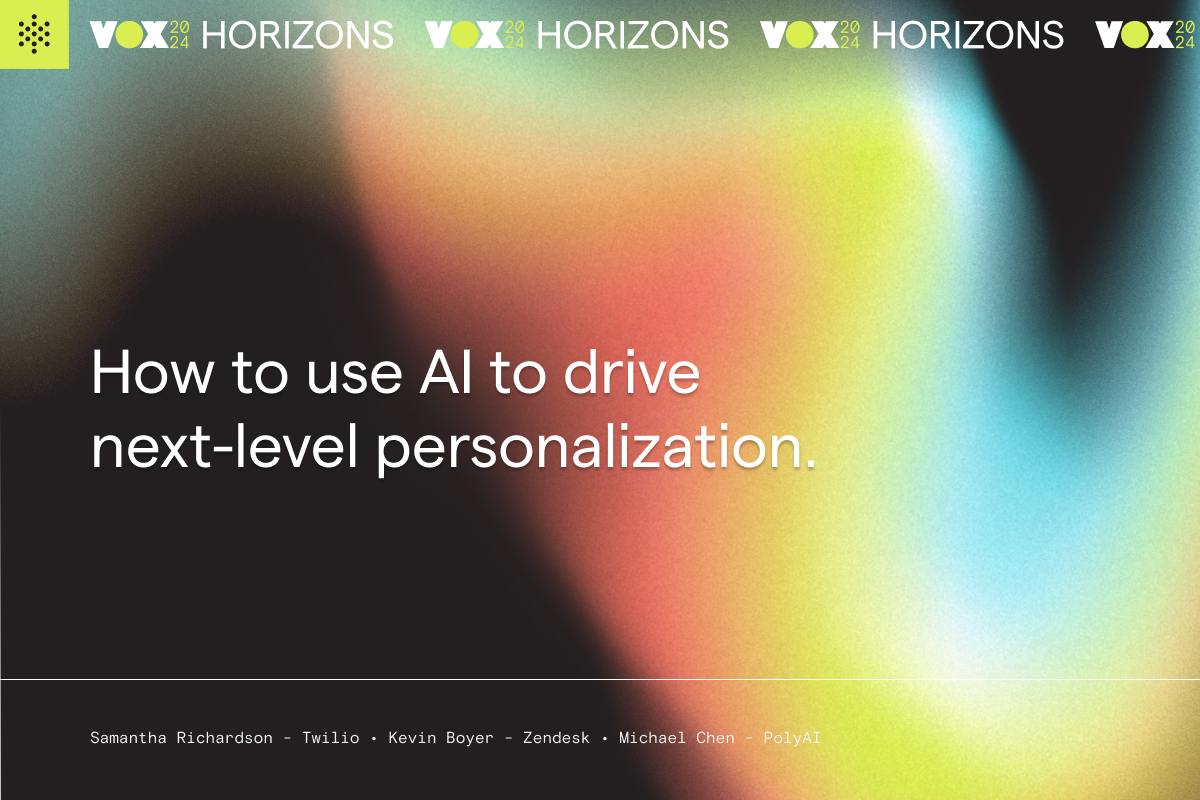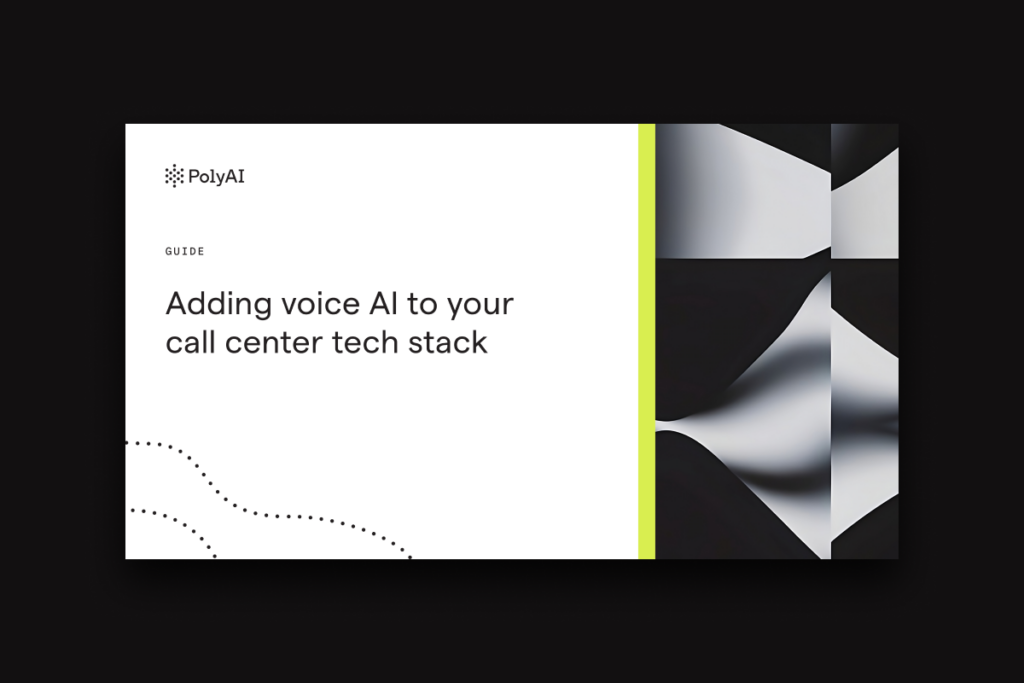Table of Contents
At PolyAI VOX 2024: Horizons, Sam Richardson, Executive Engagement Director at Twilio, and Kevin Boyer, Senior Director of Product Marketing at Zendesk, joined PolyAI’s Michael Chen to explore what it means to leverage AI to deliver unparalleled personalization.
Voice AI holds huge potential for data collection. By enabling open-ended questions through LLMs over the phone, enterprises can capture customer feedback on a scale that was previously unimaginable. This capability lays the groundwork for the next level of personalization enterprises want to unlock.
“All too often, we don’t think of voice as a digital channel,” says Sam Richardson. “But it absolutely is because we can mine all of the information from it and use that to deliver a great service and great personalization.
“I think people are still stuck thinking that personalization is all about the marketing messages that you send and how you tailor them to make them more relevant, which, of course, it is. But I think people are missing a trick when they don’t think about how to shift their thinking as to how we actually can use data and AI technology to engage in a more personal way with customers across every single interaction.”
This shift in perspective opens up new opportunities to rethink how technology can transform customer relationships.
The future direction of AI and customer engagement
“Voice, in particular, is the most expensive channel,” says Kevin Boyer. “ Anything you can do to reduce the cost of that channel will be useful and helpful for your bottom line. But there is a way to do it, while still delivering a personalized experience.
“At Zendesk, we believe that in the future, AI will touch 100% of all interactions and that maybe as many as 80% of them will be completely resolved without a human being. And if done right, the quantity of interaction between brands and individual consumers will actually increase because they’ll be more satisfying.
“Voice is normally the channel of choice for emotional and urgent queries,” adds Sam. “AI enables voice to also become the channel of ease, and the key channel of resolution, which is the important word because as consumers, customers always want resolution.”
Learning from the past to improve the future
Sam highlights the importance of creating seamless transitions in AI-powered interactions. Customers value the efficiency AI offers but want the reassurance that a human is always available when needed.
“Organizations need to learn the lesson from when chatbots were introduced,” says Sam. “We thought that they were going to knock a lot of volume out of the contact center. But we need to make sure that there is that jumping off point to speak to a human. I think learning from the limitations in those earlier days of chatbots and applying that to voice will set organizations up in a better way to be able to actually contain that and see the benefits.”
Making human interactions better with AI
By blending the strengths of AI and human agents, organizations can deliver interactions that are not just efficient but also deeply empathetic and tailored to individual customer needs.
“AI definitely has the power to make each human interaction much better,” says Kevin. “That’s why we’re seeing the rise of tools like agent assist or copilot modes, which many vendors, including Zendesk, have offered. Initially, these tools relied on a generative AI prompt model, where agents would actively search for information. However, they’ve evolved into something more proactive.
“Generative AI models are now using the customer’s existing knowledge base, plus additional databases, so the recommendations coming from AI are more accurate, more relevant, and contextual. This makes it possible for the human to personalize not just to the circumstances of what brought the call, but also to the actual pain point and the known concerns of that customer.”
Data as the foundation of personalization
Voice AI, combined with data from other channels, is paving the way for organizations to achieve a new level of contextual and personalized service.
“It all starts with the data,” says Sam. “Not just being able to gather that data from voice calls, from marketing touchpoints, from every single interaction that you’re having with the customer but to be able to then take that data, use that to provide that contextual information.”
“We’ve seen that voice AI projects often bring together teams that traditionally have not had a lot to do with each other,” adds Michael Chen. “Get to know some colleagues you might not have thought to. We’ve seen a lot of marketing and brand teams get involved, so reach out to more stakeholders in your organization and work with them to discover what personalization could mean for your business.”
A huge thank you to Sam and Kevin for joining us at PolyAI VOX 2024: Horizons. You can catch up on all of the talks from our annual event on demand here.




